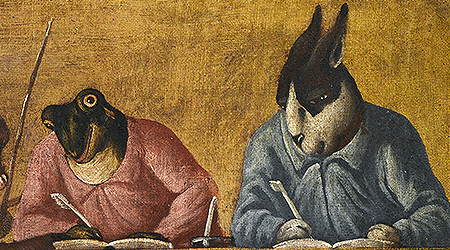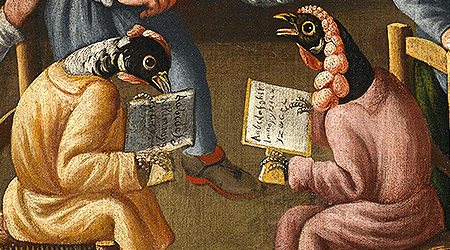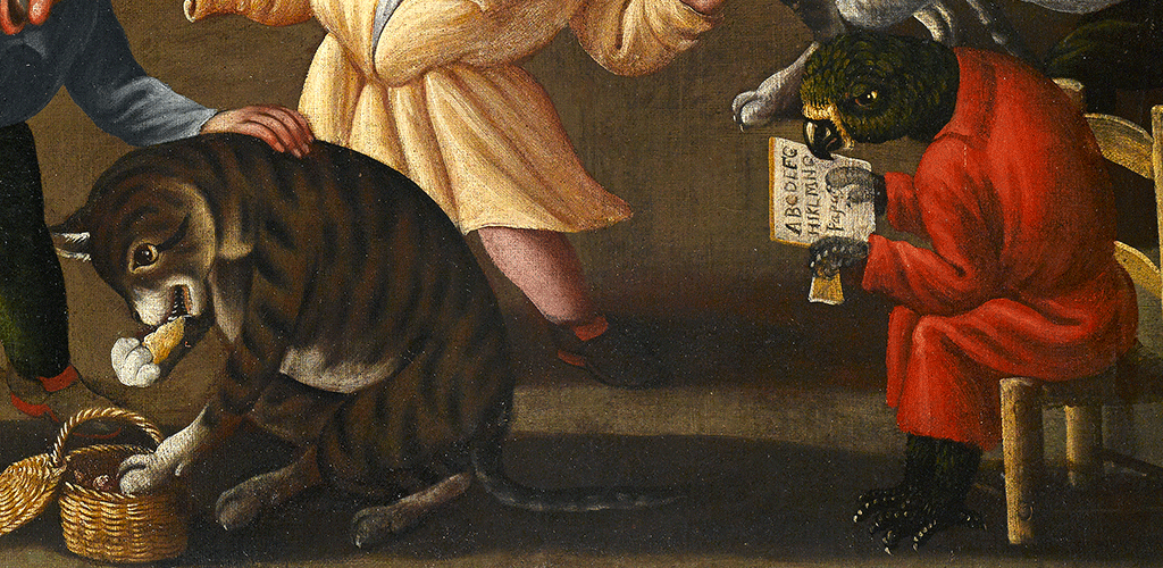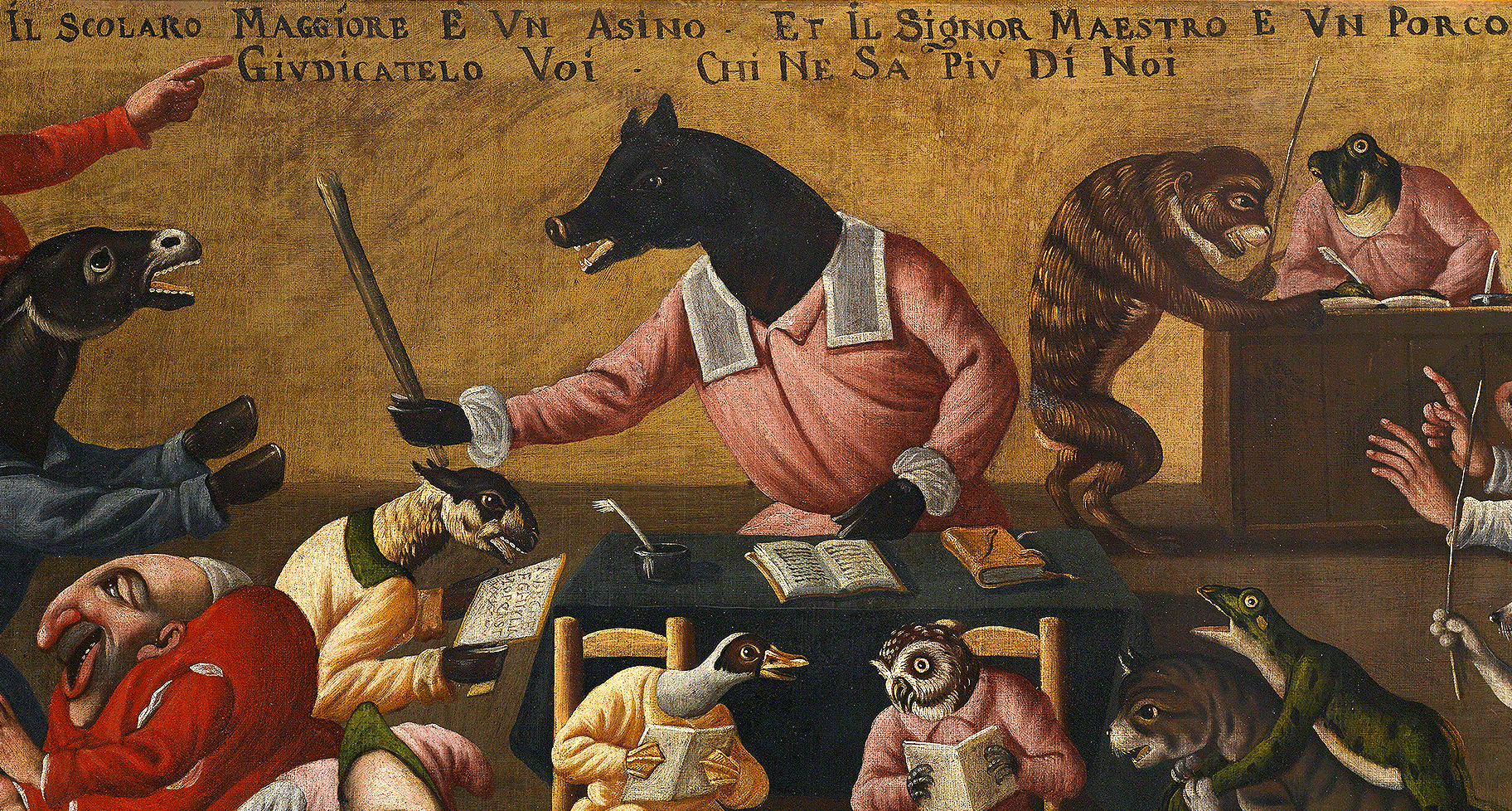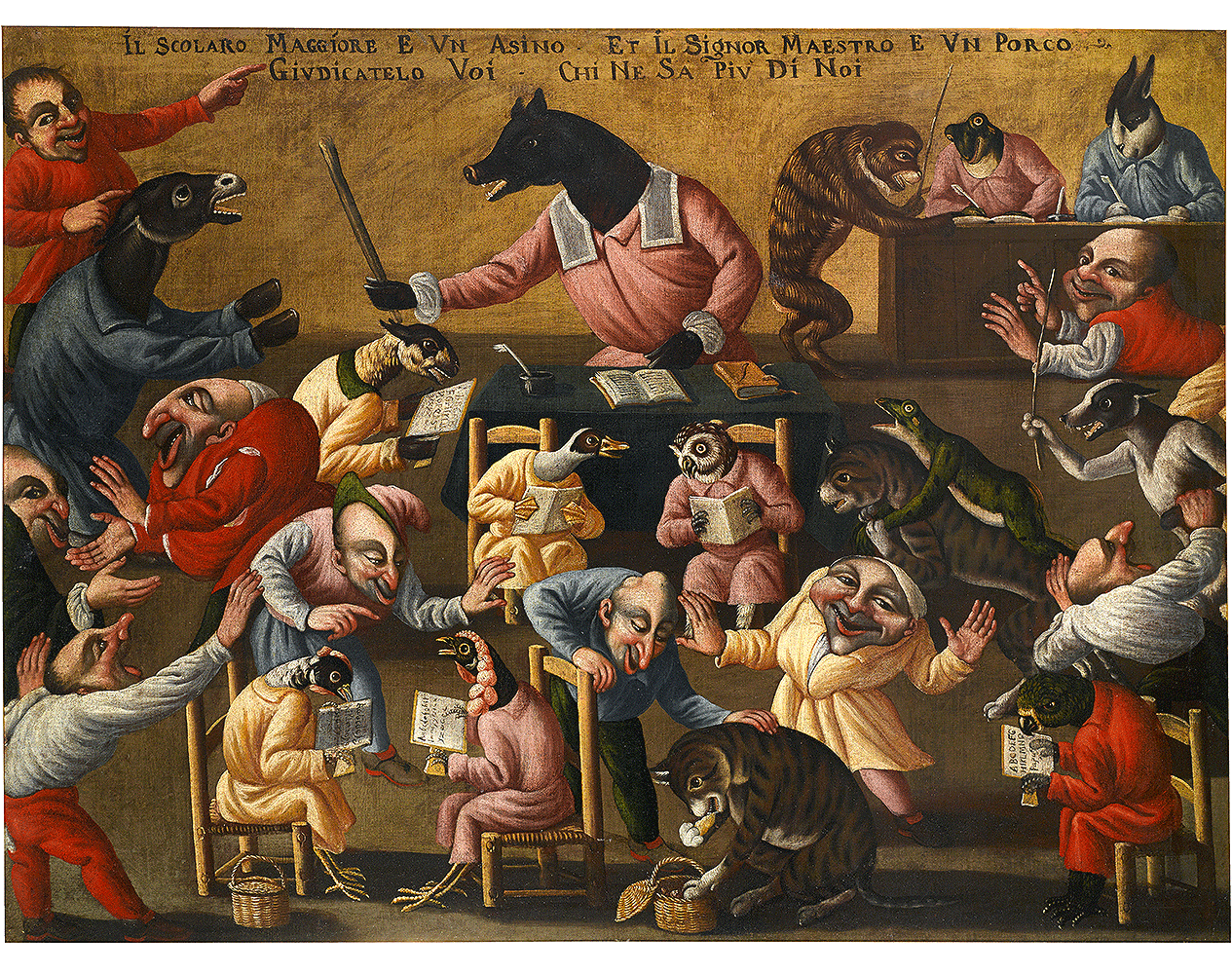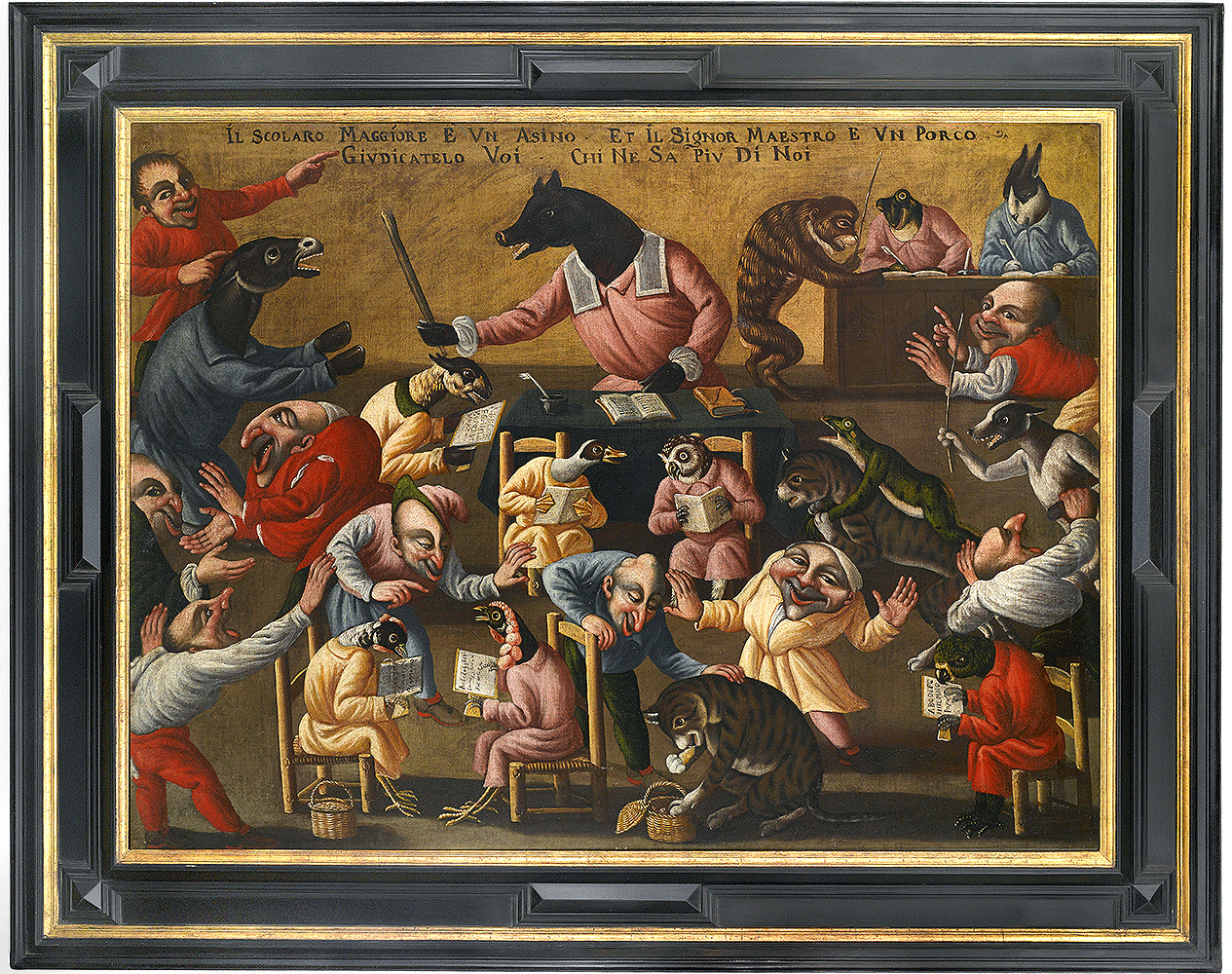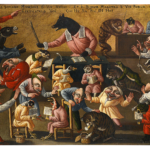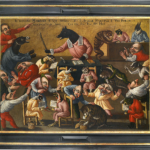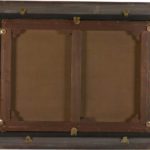Provenance:
Private collection
Exhibitions:
Palazzo Martinengo, Brescia, Gli animali nell‘arte dal Rinascimento a Ceruti, 19 January – 9 June 2019, no. 64
Bibliography:
D. Dotti (ed.), Gli animali nell‘arte dal Rinascimento a Ceruti, Milan, 2019, no. 64, pp. 196-198, illustrated p. 197
The paintings of the still anonymous Master of the Fertility of the Egg (Il Maestro della Fertilità dell’Uovo) are often associated with those of Faustino Bocchi (1659-1741) and his circle. However, the satirical content and symbolic meanings of his paintings are expressed in a unique and unusual style.
In all the three paintings, the protagonist is a black pig in a pink garment that appears to personify authority. Since pigs are generally associated with negative values such as greed, lust, gluttony or sloth, the paintings should very likely be read as satirical allegories, containing elements of the world turned upside down (‘Il mondo alla riversa’)
In the third painting the black pig plays the role of an astrologer, as described in the inscription on the flag in the upper right corner (‘Il porco fa l ́astrologo’). The first part of the inscription (‘Fama volat’) is a saying taken from Virgil ́s Aeneid (III, 121) that can be translated as “rumour has wings”. The motif of the cat, which is sitting on a flying cock in the upper left corner, can be read as a humorous allusion to this passage. However, the main subject of the composition seems to be a different one. The painting portrays depictions of charlatan practitioners who are offering their services on the marketplace, or in the course of festivals, that had already been depicted by Hieronymus Bosch and his circle. At the same time, the painting seems to denounce both the fraudulent intentions and incompetence of the astrologer, as well as the credulousness of the “customers”. Since the painting bears compositional similarities to depictions of triumphal processions such as Andrea Mantegna’s Triumphs of Caesar, the grotesque character of the low content is additionally emphasised by the contrast to a noble tradition.
The name of the painter derives from a painting in the Milwaukee Art Museum, titled The Fertility of the Egg. There is no documentary evidence regarding this master and the painter’s identity is still in question. Based on his XVII century manner of painting and Northern style some scholars have suggested that the painter may have been a predecessor of Faustino Bocchi.
The Master could be seen as the inventor of a “moral zoology”, emphasizing the madness of human condition and the vanity and ridiculousness inherent in life by depicting seemingly absurd characters. The contents and style of the Master are typical of the XVII century.
